The traditional division of Italian art into regional schools remained throughout the 19th century, although it was drawn along new lines. Apart from the Tuscan movements, which developed in the specific directions illustrated here, the evolution of art took different paths in the North and the South of Italy.
It was in Naples, in the South, at the end of the 18th and beginning of the 19th century, that art first showed signs of finally shedding its old attachment to academic principles. Emboldened by the presence of foreign artists, notably the English painters Bonington and Turner, the Posillipo School proposed a new vision of the landscape, in which colour changed with the shifting light and nature became both source and expression of emotion.
The evolution of art in the South of Italy is illustrated by the works of artists from the early 1800s to the second half of that century and the beginning of the next: they range from Consalvo Carelli to the brothers Giuseppe and Filippo Palizzi, from Edoardo Dalbono to Giuseppe De Nittis and eventually to Vincenzo Gemito, ending with Francesco Paolo Michetti, who is discussed as part of another tour (see Figuration at the Beginning of the Century).
In the North of the country, Francesco Hayez, a Venetian working in Milan, set a new direction in the 1820s. From his early training in the Neoclassical tradition he progressed through Romanticism, finally conveying deep empathy in both his portraits and his paintings of historical subjects, with their evident allusions to the aspirations of the Italian Risorgimento.
The evolution of art from the 1850s until the turn of the 20th century is illustrated by the works of Daniele Ranzoni, Giovanni Segantini, Angelo Morbelli, Vittorio Avondo and Lorenzo Gignous.
Throughout the 19th century, Italian art, which was rooted in local experience reflecting the North-South divide, maintained unique links with developments in Europe, from the evolution of English painting at the beginning of the century to the innovations in France from the 1850s on, although without occupying a position of central importance.
Artists in Southern Italy were drawn above all to developments taking place in England and France around the middle of the century and beyond, right up to the advent of Impressionism. In the North, after the period of Romanticism initiated by Hayez, the combination of Realism and Symbolism exemplified by its leading exponent Segantini was followed by a commingling with developments in France at the end of the century, from divisionism to evidence of deep involvement in the country’s social situation.
Il Sud e il Nord nell’Ottocento italiano
South and North in 19th Century Italian Art
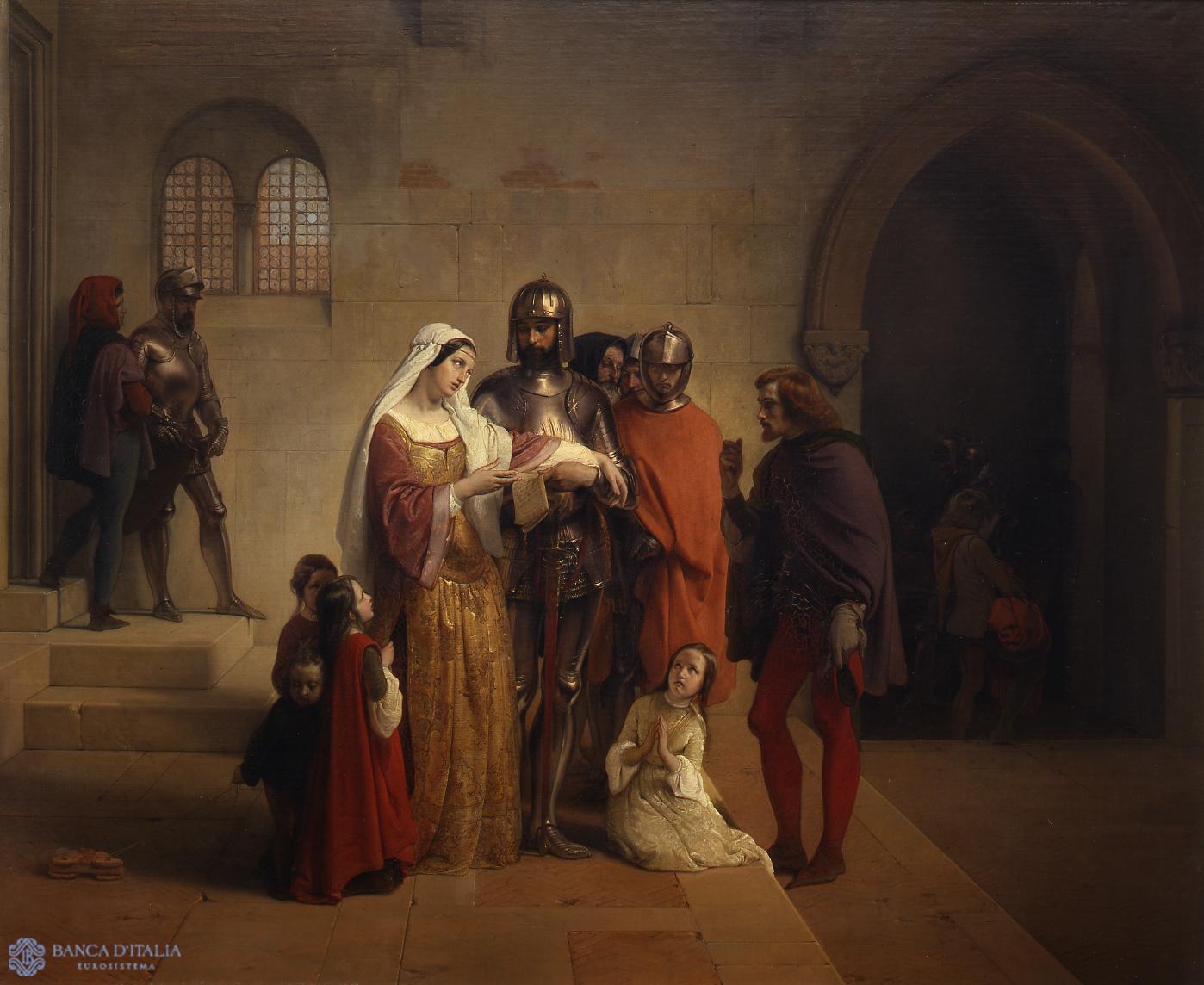
Works of art
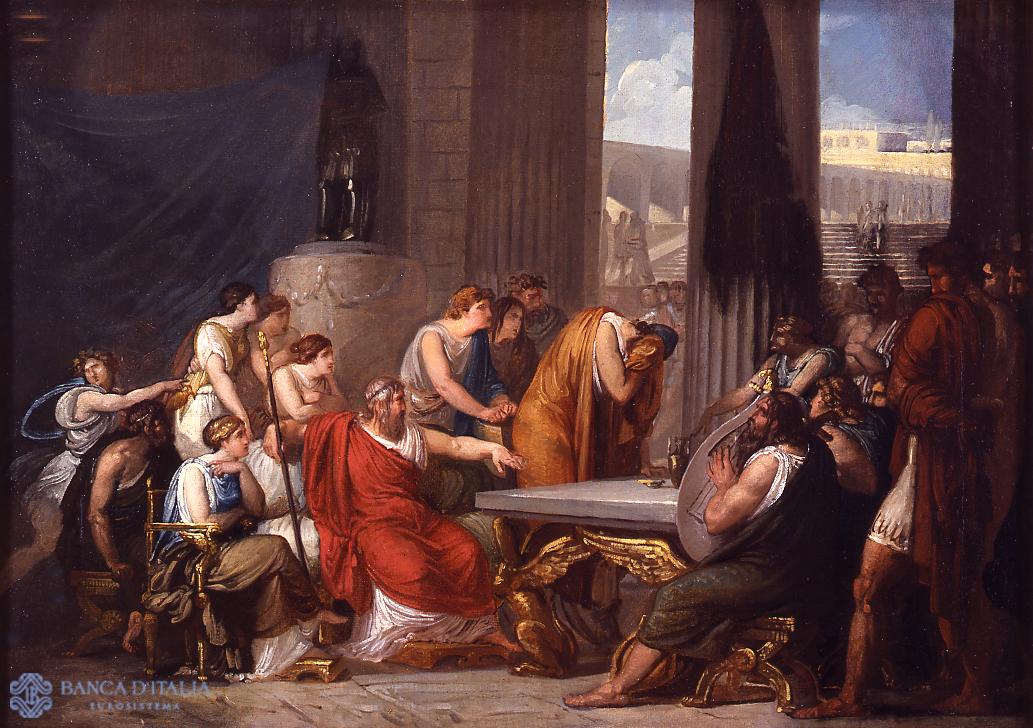
Ulisse alla corte di Alcinoo re dei Feaci
Gathered around Alcinous, King of the Phaeacians, at the centre, the figures lean towards the right, towards Ulysses, their slight bodily inclination emphasizing their intense involvement.
Painting
19th century AD
Biblical - Historical - Mythologic
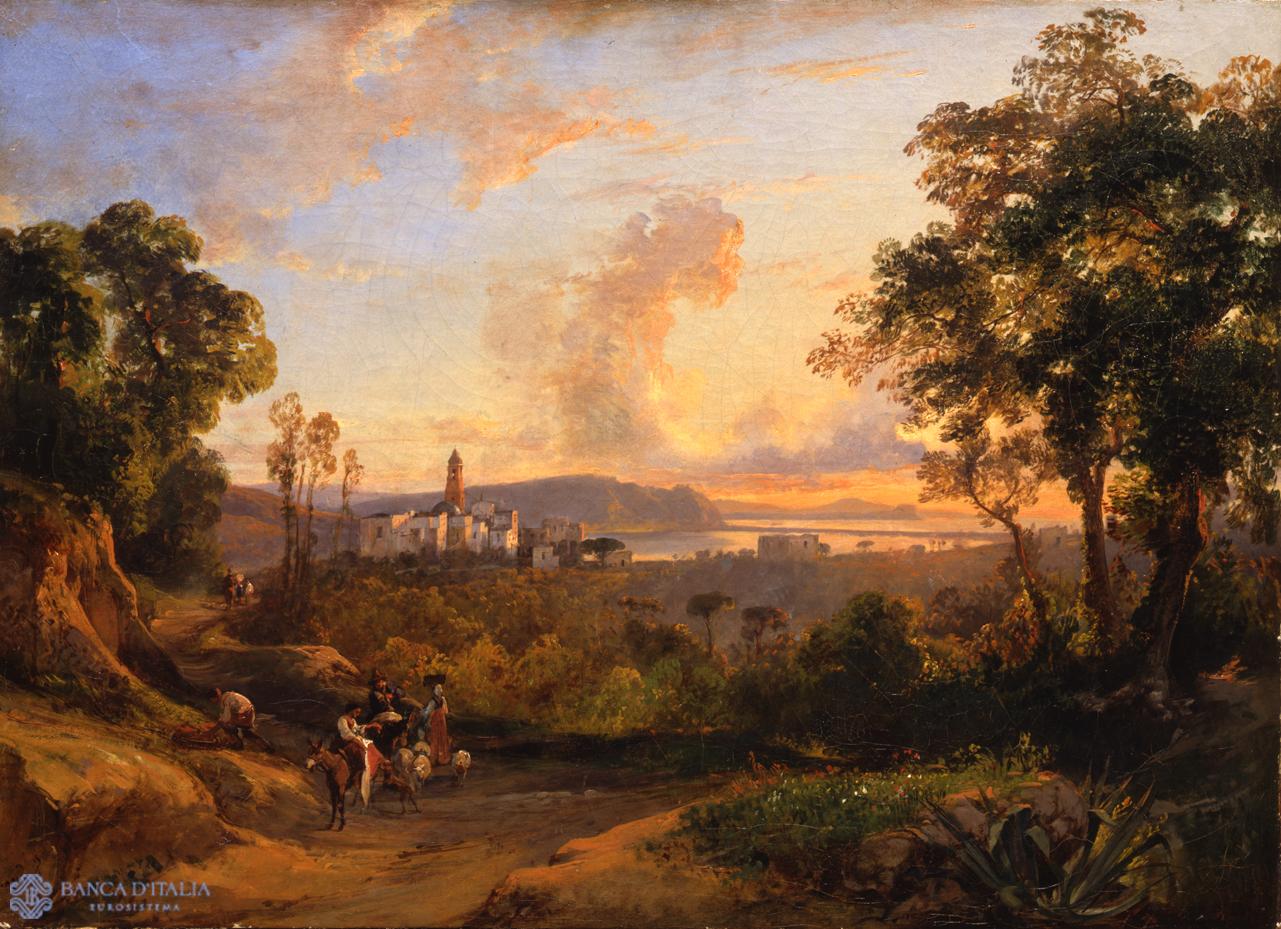
Tramonto a Bacoli
As in La penisola sorrentina al tramonto the landscape in Tramonto a Bacoli is marked by the presence of trees, which occupy the two sides of the work in this case, spreading towards a horizon dominated by a luminous sky.
Painting
19th century AD
Landscape

Il Temporale
Giuseppe Palizzi’s thunderstorm shows an image constructed around the central figurative block of the herd of cattle, as if gathered together to protect themselves against the inclement weather. The pale coats of some of the animals appear to attract the little light that filters down from a break in the dark stormy sky.
Painting
20th century AD
Landscape

San Bernardo a Pollone
This landscape, dated 1882, presents a slice of nature, powerfully engaging the viewer in its unrivalled wealth of meadow and shrub greens and the liveliness of a sky in which dark and white clouds do battle.
Painting
19th century AD
Landscape
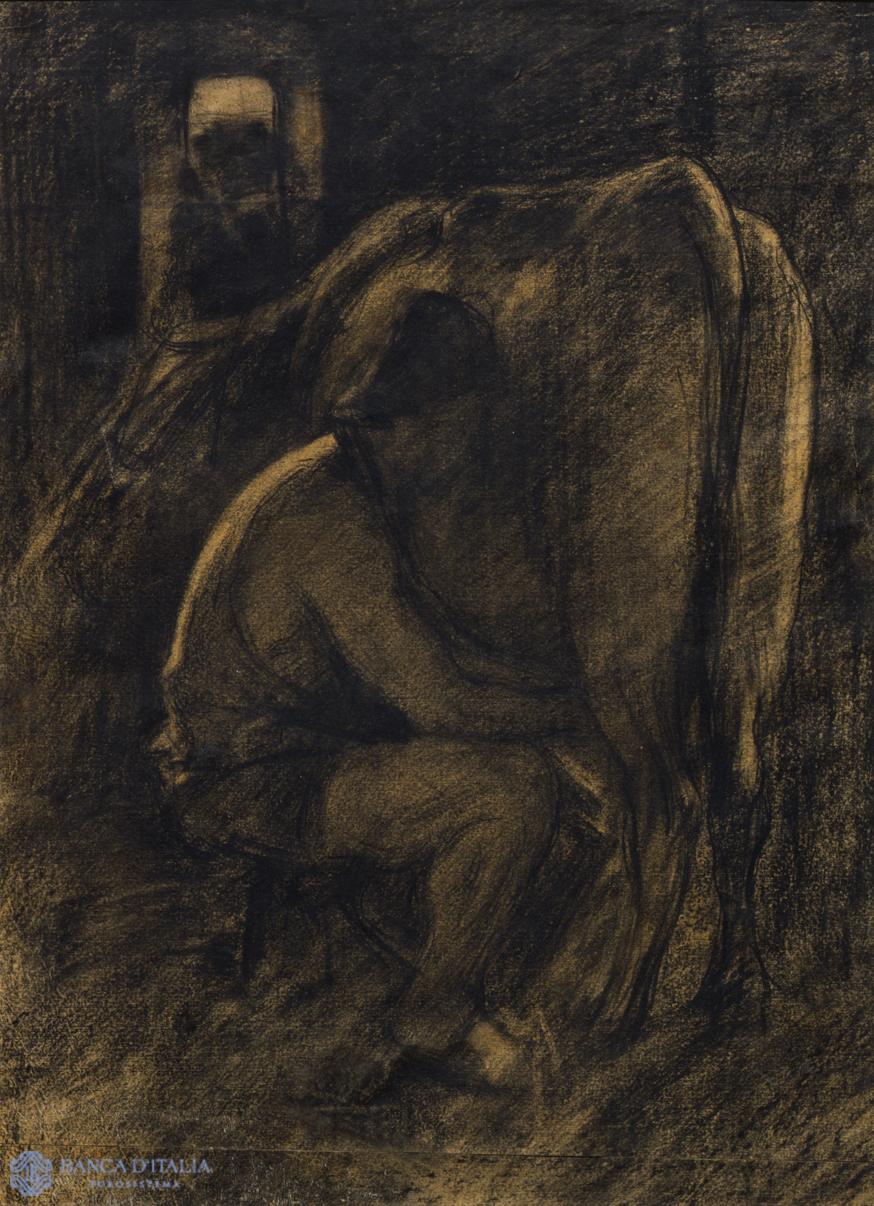
Ragazzo che munge nella stalla
In this small charcoal drawing, which Segantini completed during his long sojourn in the Graubünden canton, dim light filters from the back of the stable and illuminates the scene of the boy milking, which occupies almost all the picture.
Painting
19th century AD
Figurative

Quiete
In Avondo’s Quiete (“Stillness”), sky and sea dominate, reducing to the minimum the presence of the land, which is practically repulsed to the extreme right of the painting. An immobile sky and an equally still sea, its waters completely without motion, are both equally melancholy in tone.
Painting
19th century AD
Landscape
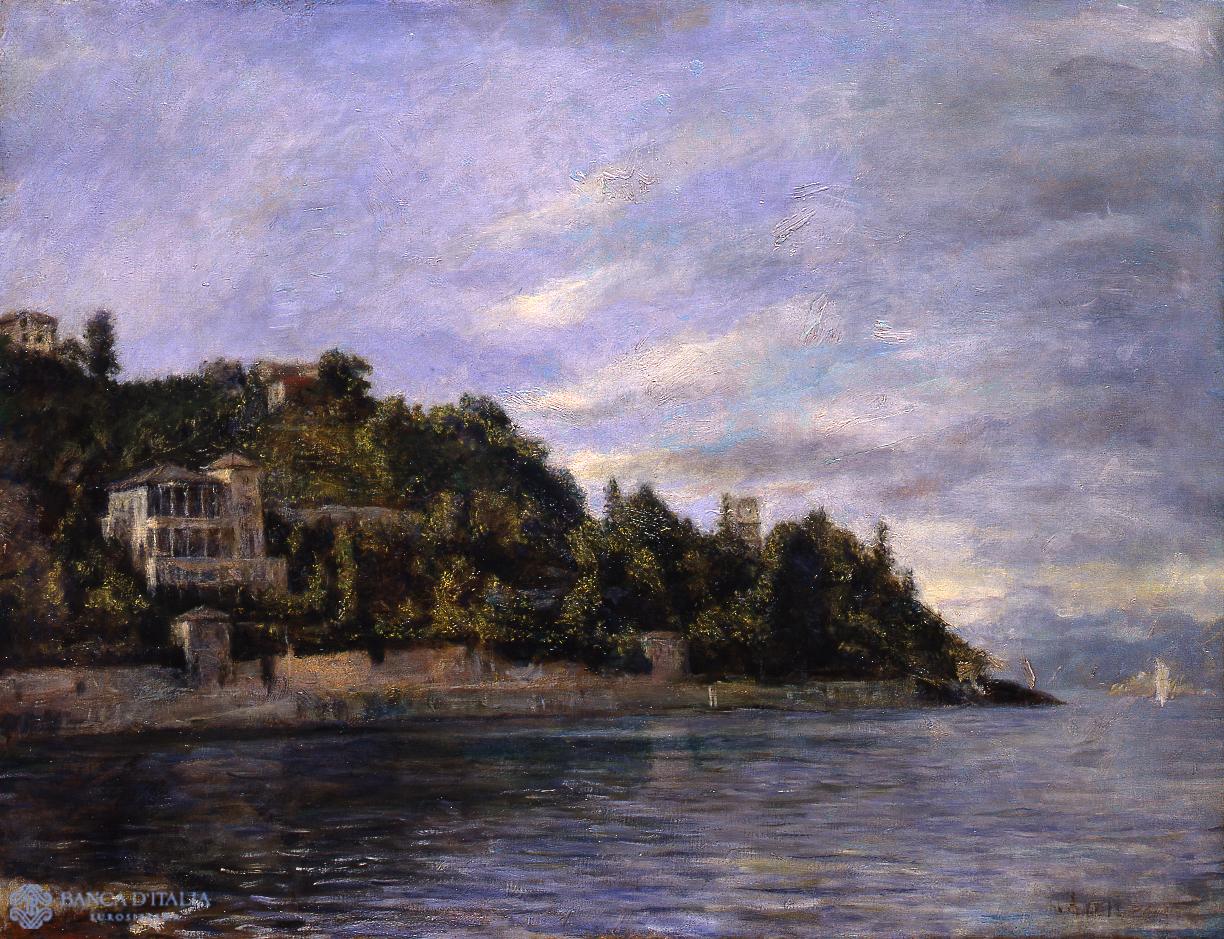
La punta di Pallanza
Daniele Ranzoni’s few, sporadic landscapes have as theme Lago Maggiore, where the artist was born and lived. In this intense view of the lake, Ranzoni offers a sample of his refined sensitivity to light and colour. The painting dates to his last years (he died in 1889).
Painting
19th century AD
Landscape

Pescatorello con canna
In his works on the “fisher boy” theme, like his other depictions of typical Neapolitan characters, mostly young boys, Vincenzo Gemito combined his extraordinary talent and inner drive to realism with the results of his profound study of the Hellenistic sculptures in the collection of the Museum of Naples.
Sculpture
Figurative
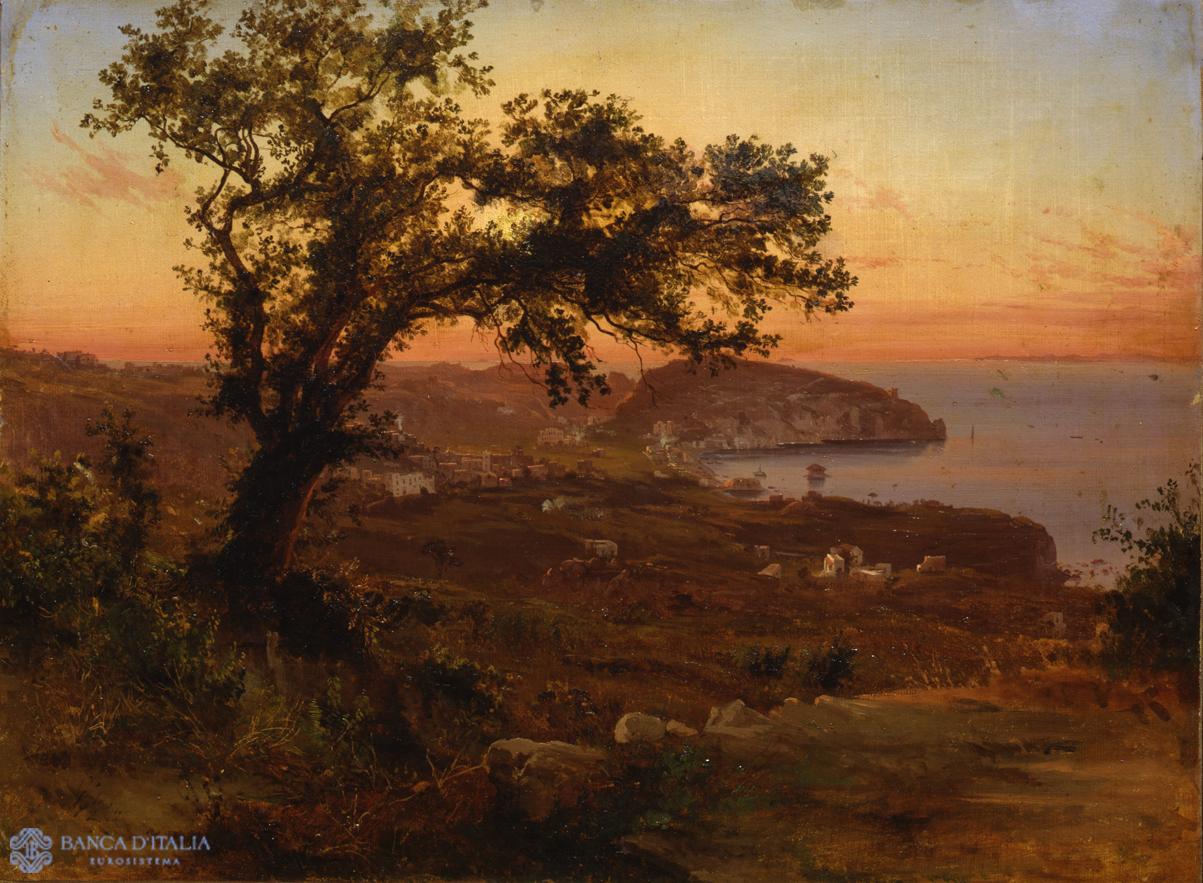
Penisola sorrentina al tramonto
Giacinto Gigante’s painting of the Sorrento peninsula at sunset shows a landscape that extends towards the sea, occupying nearly the whole canvas, its outermost bounds the delicate rose tint of the sunset under a warmly luminous sky.
Painting
19th century AD
Landscape
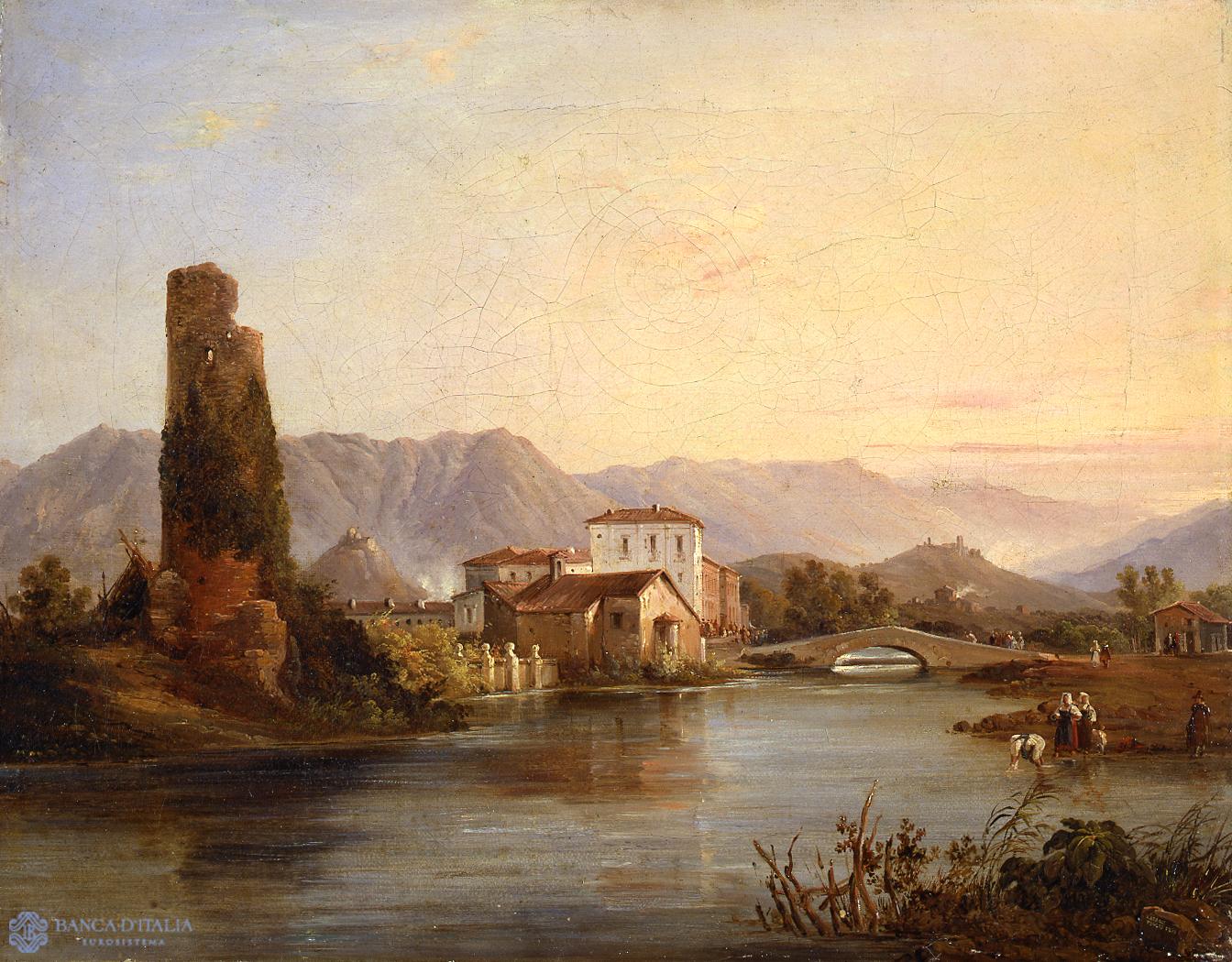
Paesaggio fluviale con caseggiati e lavandaie
Painted towards the end of the 1830s, thus still during the artist’s youth in Rome, this landscape showing a river with houses and laundresses links two inspirations: the new ideas of a direct view of the landscape and the creation ¿ like a stage setting ¿ of a composition intended to satisfy a more traditional sense of harmony.
Painting
19th century AD
Landscape

Nomina di Pietro Rossi di Parma a comandante delle forze di terra
In one of the rooms of a medieval castle we see Pietro Rossi in the midst a throng of family members, children and men in arms on the occasion of his appointment as commander of the land forces. The group at the centre of the picture seems to be back-lit, highlighting the white veil of the woman, a soldier’s red cape and the gleaming helmets.
Painting
19th century AD
Biblical - Historical - Mythologic

Mucca e vitello
Like Palizzi’s painting of the stable and newly-born calf, Mucca e vitello presents the viewer with a simple scene: two animals watched over by a girl in a what seems to be a forest clearing opening onto a meadow.
Painting
Figurative
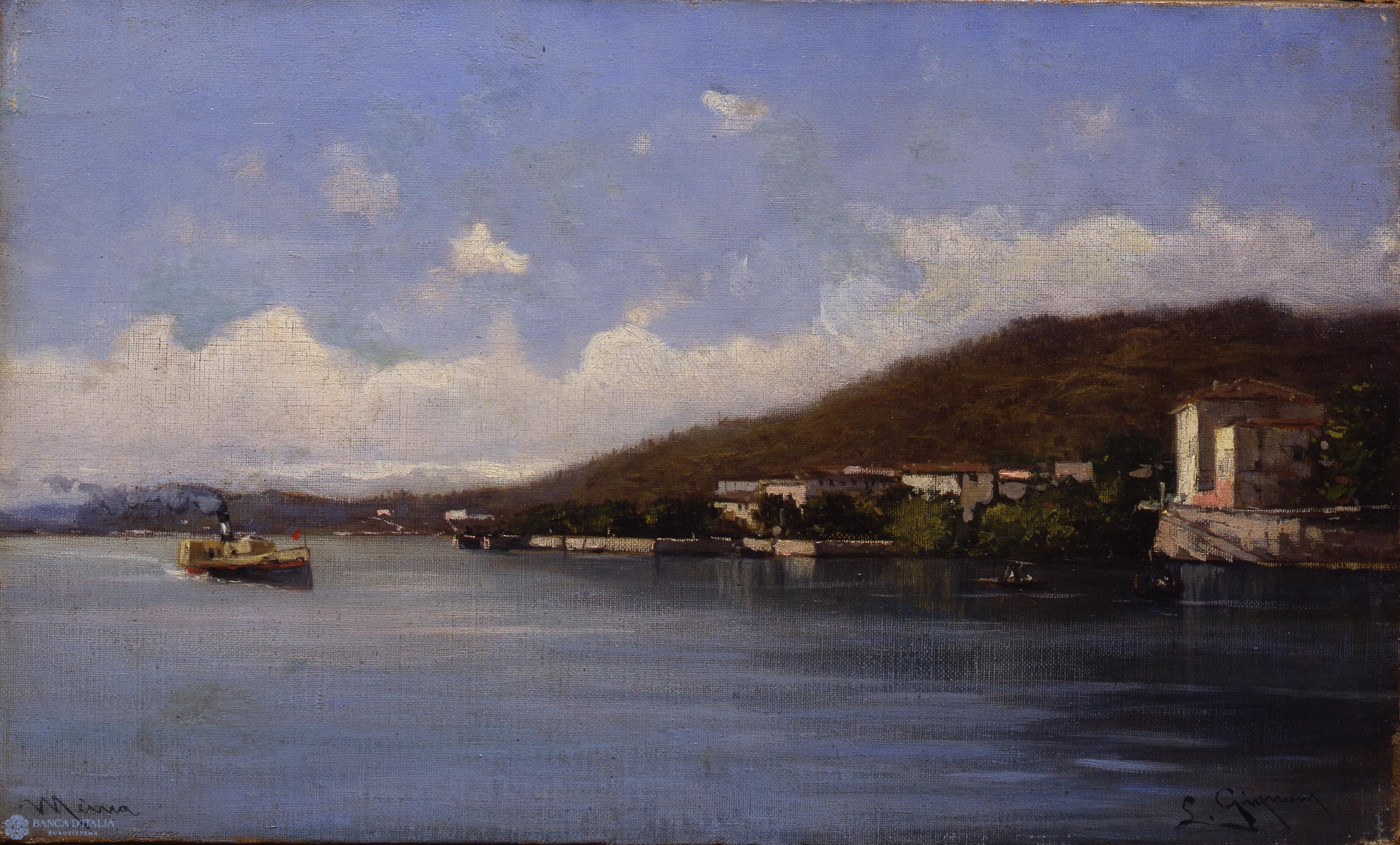
Meina
This view of the town of Meina near Novara extends horizontally between a lake and hill. The right-hand side of the painting is occupied by the dark hill that gradually fades into the background, while the lake instead moves towards the foreground, progressively widening.
Painting
Landscape

Il mazzo di giunchiglie
This small painting depicts a woman holding a bunch of bright white daffodils, seen from behind, a view rendered almost fleeting by the light, quick brushstrokes. The landscape is only hinted at, evoked by the lively contrasts of intense greens, ochres and browns.
Painting
19th century AD
Figurative

Marina con barche e pescatori
This painting of a harbour with boats and fishermen has an extremely simple structure: a fishing boat with two large sails unfurled side by side rests between sky and sea. The sail nearest to the viewer is set in the opposite direction to the sun on the horizon and therefore seems darker, while the other sail, partly hidden by the first, is bathed in light.
Painting
19th century AD
Landscape
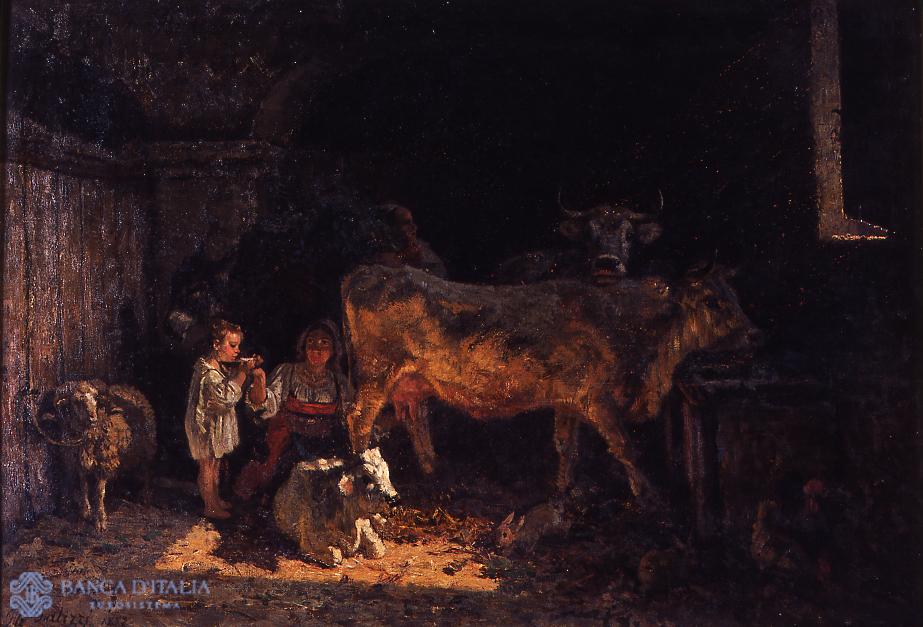
Interno di stalla con mucche e contadini
As in other works, in Interno di stalla con mucche e contadini Filippo Palizzi abandons himself to an affectionate relationship with simple realities, capturing with empathy their immediacy and everyday character.
Painting
19th century AD
Figurative
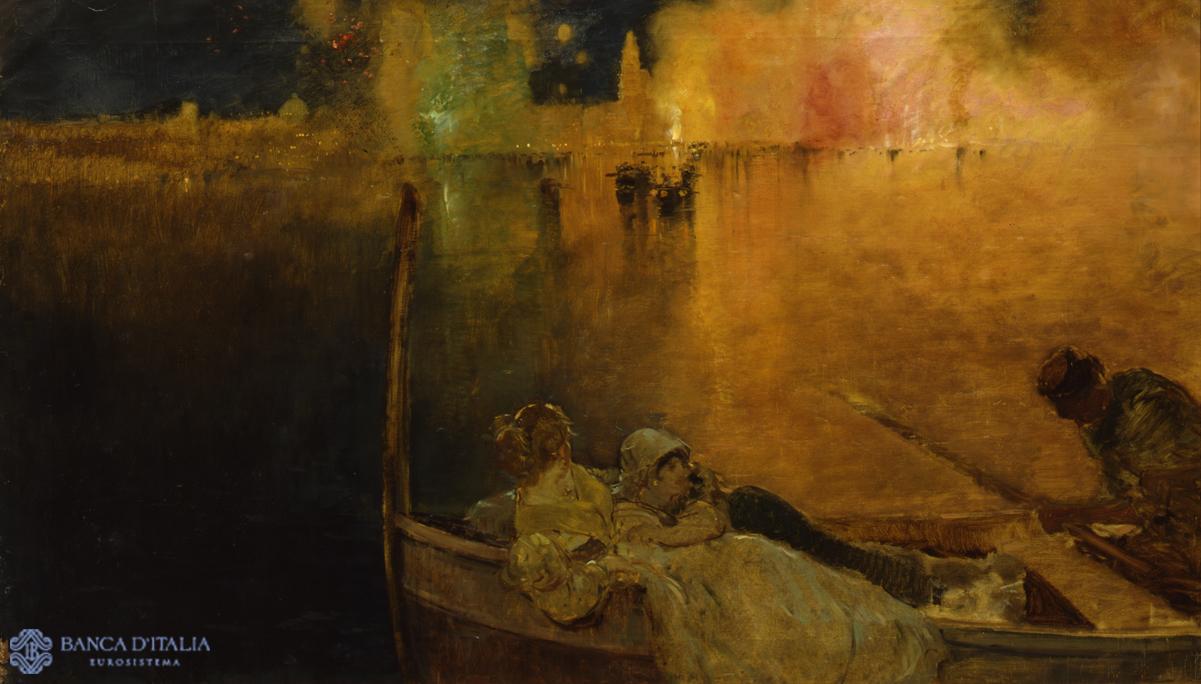
Fuochi sul mare alla Festa del Carmine
This work was done towards the end of Dalbono’s artistic activity. It depicts fireworks illuminating the shoreline in the background, while in the foreground on the right there is a boat with passengers watching the spectacle.
Painting
19th century AD
Landscape

Il Foro di Pompei II
De Nittis’s language is sensitively tuned to the different natures of the various objects depicted. In this second variation on the theme of the Forum of Pompeii the forms are marked by the meeting, or rather the impact, of light and stone.
Painting
Landscape

I fiori bianchi
The lad’s immature but attentive face emerges from the dark, the effect stemming from the contrast between the light and the dark tones. The branch of white flowers rings out on the jet-black jacket. Beneath a soft mass of curls enlivened by highlights, the lad’s head is bent slightly and turned towards something or someone.
Painting
19th century AD
Figurative

Cacciatore nella foresta tropicale
The work depicts an imaginary forest landscape, a mixture of exotic trees and trees of more uncertain origin. The landscape appears to close in on itself, leaving two small openings to the sky in the background.
Painting
19th century AD
Landscape

Bimba al sole
The use of light to animate colour, which flares up suddenly and then is attenuated in areas of shadow, was the core problem of Francesco Paolo Michetti’s artistic exploration from the first years of his training at the Naples Academy, when he attended the meetings of the Repubblica di Portici.
Painting
19th century AD
Portrait
